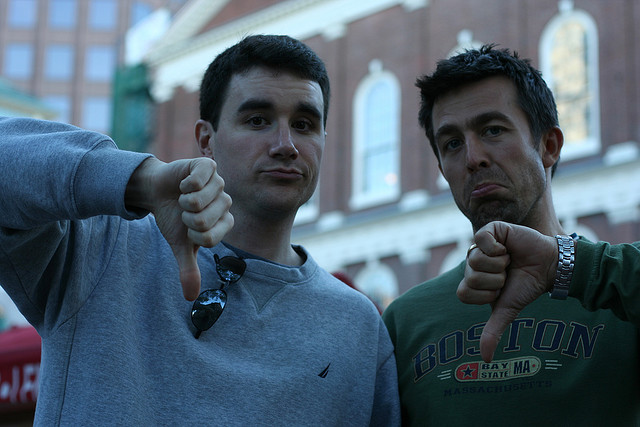6. Why aren’t we talking about Marietta, Georgia?
While stories about displacement in gentrifying neighborhoods abound, more direct, egregious examples of displacement in suburban areas are often left behind. We focused on one particularly galling example of an Atlanta suburb using eminent domain to demolish an apartment complex predominantly occupied by lower-income people of color, to be replaced with a commercial development.
5. Our old planning rules of thumb are “all thumbs.”
Wider roads are safer roads. We should be concerned about having “enough” parking. Land uses generate a fixed number of vehicle trips. These old rules of thumb are deeply flawed, and have led to unsustainable, expensive, and environmentally dangerous urban planning. It’s time for some new rules of thumb.

4. Homevoters v. the growth machine.
There are two big theories about who controls urban development. One says it’s a coalition of business interests and developers, who push past zoning regulations with ease; the other says it’s homeowners, who are able to quash most development they fear might negatively affect their property values. A new study from NYU takes a look at Bloomberg-era New York City—which ought to be as favorable a territory for developers as exists in the US—and finds evidence instead that homeowners dominate even there. White neighborhoods, areas near high-testing schools, and places with high population growth are all more likely to be downzoned (have allowed density reduced) than upzoned (have allowed density increased).
3. Truthiness in gentrification reporting.
This Fall, a series of studies came out suggesting that many of the most-feared impacts of gentrification were much less of a big deal than widely thought. One paper by the Philadelphia Fed found little evidence for displacement in gentrifying neighborhoods in that city; another in New York found that residents of public housing in gentrifying neighborhoods benefited, with higher incomes and better schools.
2. My illegal neighborhood.
Our guest writer, Robert Liberty, takes a look around his Portland neighborhood and realizes that almost everything he likes about it has been made illegal. There’s the buildings without parking lots; the homes, shops, and jobs at light industrial sites all within walking distance of each other; the apartments and single family homes side by side; the street narrow enough to cross easily and discourage speeding cars. Why are these things illegal again?
1. The immaculate conception theory of your neighborhood’s origins.
Newsflash: everyone hated your home when it was new, too. While a debate over allowing apartments in single-family home neighborhoods prompted an appeal to the inherent goodness of early 20th century bungalows, it turns out that romanticizing past eras of homebuilding is dangerous business. But there are lessons to learn from our urbanist forefathers and -mothers, like the good that can come out of allowing a city to grow, and allowing many kinds of homes for different kinds of people.



